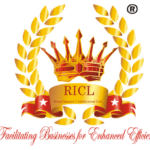Inspection Services
Comprehensive Inspection and Audit Services to Enhance Quality and Compliance
What are the Different Certifications Are at RICL
1.Third Party Inspection
Description: Independent evaluation typically performed by an external organization to ensure that all products and processes meet the specified requirements and standards.
Applications: Used in manufacturing, construction, and production to validate quality and compliance without conflicts of interest.
2. Green Building Inspection and Certification
Description: Assessments focus on environmental aspects of building design, construction, and operation, often leading to certification under standards like LEED or GRIHA.
Benefits: Includes reduced energy consumption, improved occupant health, and lower waste production.
3. Site Inspection
Description: Detailed examination of construction sites or operational facilities to ensure compliance with safety and regulatory standards.
Process: Typically involves checking the adherence to architectural plans, safety protocols, and construction best practices.
4. Energy Audit
Description: Systematic process to identify, analyze, and optimize energy consumption in a building or facility to reduce costs and improve energy efficiency.
Methodology: Includes assessment of energy flows for energy conservation in a building, a process, or system to reduce the amount of energy input without negatively affecting the output.
5. Second Party Audit
Description: Conducted by a customer or a contracted organization on behalf of a customer to ensure suppliers meet and maintain the desired quality and standards.
Applications: Common in supplier qualification, ongoing project evaluation, and contract compliance verification.
6. Energy Simulation
Description: Uses software tools to model energy flows in buildings to predict future energy use and help in making decisions about energy conservation measures.
Benefits: Assists in optimizing building design for better energy efficiency and compliance with environmental standards.
7. Vendor/Supplier Assessment
Description: Evaluation of vendors or suppliers to ensure they meet the organization’s requirements for quality, delivery, and price.
Process: Involves audits, site visits, and comprehensive reviews of supplier processes and outputs.
8. Gap Assessment
Description: Identifies the gap between current business practices and the desired performance standards or compliance requirements.
Benefits: Helps organizations develop strategic plans to meet industry standards and improve efficiency.
9. Store Inspection/Assessment
Description: Evaluates retail or storage locations to ensure compliance with safety, operational, and corporate standards.
Methodology: Includes checking merchandise handling, storage conditions, and safety protocols.
10. Safety Audit
Description: Systematic assessment of a company’s operations to identify potential hazards and ensure compliance with safety regulations.
Applications: Crucial for industries such as manufacturing, construction, and energy.
11. Implementation – Green Building/GRIHA
Description: Assists in the implementation of green building practices and achieving GRIHA (Green Rating for Integrated Habitat Assessment) ratings.
Benefits: Focuses on promoting sustainable and environmentally friendly building practices.











